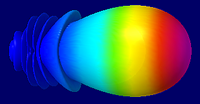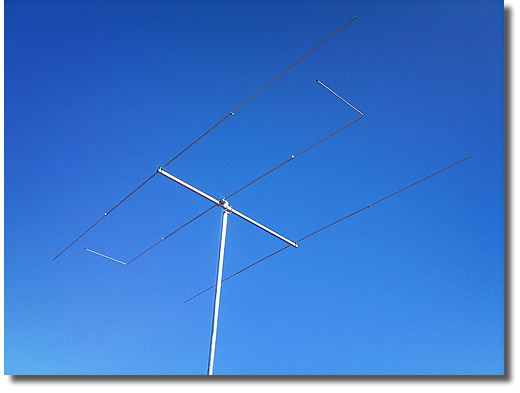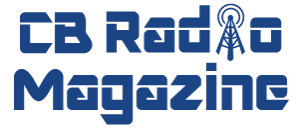InnovAntennas – UK Antenna Manufacturer
Who is the founder of InnovAntennas and how did the company get its start?
InnovAntennas was founded by myself (Justin Johnson, G0KSC and ex. 26AT810). The company started 3 years ago (January 2011) and was the result of many, many requests for me to build my antennas. I have a website, http://www.g0ksc.co.uk/ and on this site I provide many free Yagi designs for radio enthusiast to build themselves. I developed the LFA Yagi, the OP-DES Yagi, the LFA-Q Heavy duty quad and the OWL Yagi and become known through my website and writing in magazines such as antenneX and DUBUS. I also designed and modified antennas for many antenna companies prior to InnovAntennas’ inception including Force12 who we have now acquired.
How many models of antennas do you currently sell?
Around 300, but we produce bespoke antennas for commercial, government and defence requirements too.
How long have you been selling antennas in the U.S. and what has the overall reception been to your designs?
From the beginning. The G0KSC site has/had around 65% of its traffic from the US so we started selling many antennas (in particular LFA Yagis for 6m) right away. We quickly opened the Colorado office to give local presence there and help with support. This has helped us with extra business in the US.
Speaking of designs, your company has developed a very interesting opposing phase – driven element yagi antenna, can you tell us about how the idea for this antenna was conceived?
Yagis originally were designed on a ‘cut and try’ basis (before computer optimization) so to be able to achieve the ideal antenna and a 50 Ohm impedance was very difficult and hence, matching devices had to be installed. While the use of matching devices is (amazingly) still accepted, they are ‘lossy’. There is no transformer known to science that is 100% efficient and antenna matching devices are no different. These inefficiencies result in extra noise on receive and lost Watts (as heat) in the matching device itself and it is for this reason power limitations exist in antennas. InnovAntennas Yagis are designed using the latest computer optimization software to achieve optimum performance WITHOUT matching devices.

Above is a 3D plot of one of InnovAntennas 12 element VHF arrays. Typical of the LFA, it has a better G/T figure than any other Yagi of the same boom length.
The OP-DES provides two unique features. First, the bent back sections on the driven element are 180 degrees out of phase (hence the name) and this helps with side lobe reduction. Second, these bent sections are the impedance controller in the driven element so no matching device is needed! If the driven element were straight, impedance would be much lower than 50 Ohm so it really is a win-win with very high power handing capabilities of up to 50kw possible. Our antennas can provide performance over a very wide range, the 5 element OP-DES for 27Mhz provides an SWR of less than 1.5:1 from 26.8Mhz to 28.6Mhz as an example. As a footnote, all our antennas are mechanically optimized by computer too so we are able to remove mechanical defects before they even get to production.

While you have a wide variety of ham radio antennas, you also sell 9 different CB models in the U.S market. Which models have been the best sellers?
Generally the smaller antennas are popular, the 3 element OP-DES, 3 element LFA and 2 element LFA-Q all top that list. In addition to the smaller 3-element models, we have sold a good number of 5-7 element OP-DES Yagis, and the 5-element LFA (Loop-Fed Array) Yagi, as well. We do a lot of bigger ‘custom’ designs too, generally for the power-hungry! We recently produced a 7 element LFA @ 18m long to handle 20kw for a European customer.

Many CB hobbyists these days are looking for more compact antennas that can still offer a high level of gain, can you tell us about your 2 element and 3 element designs?
Everyone seeks the Holy Grail! The truth is, you do not get something for nothing. Generally, Yagis that appear to have very high gain, provide this over a very narrow bandwidth before it drops away in a ‘ski slope’ fashion. Ours are optimized without the record-breaking gain figures but provide the same performance over 1Mhz or so in order to make them much more usable.
One design that we have introduced in the past year is the LFA-Q, which uses two rectangular loops to form an extremely compact beam with high gain. For 27 MHz, we’re talking about 7 dBi of free-space gain and 20 dB of front-to-back ratio on a boom length of under 30 inches! That’s a gain figure typically associated with three-element Yagis, and yet the turning radius is under ten feet. The LFA-Q has a natural 50-Ohm feed impedance, like the OP-DES, so there are no matching devices to unbalance the pattern or introduce other losses.
What type of CB’er is your target consumer and what are the key benefits of your antennas that you would want that operator to know about?
All our antennas are extremely high quality and we know many operators are not used to seeing such high quality in this hobby. We use marine Grade (A4/316) stainless throughout and aerospace aluminium so if we were to select a user group, it would be dedicated or serious hobbyists that would most appreciate our wares. That said, anyone is our customer if they want to be! I will always discuss requirements with any customer, past or present and help out with and advise during installs too. Yes, we have phone numbers, can be contacted and reply to emails too!
Your antennas are priced higher than some of the other yagis on the market, what is driving the difference in price?
As discussed above, ours are professional grade, not hobby grade, so in addition to the much more day to day focused performance characteristics already discussed, our antennas will be around for many years, buy cheap and you end up buying twice.
Where are your antennas manufactured?
We have manufacturing facilities in Grand Junction, Colorado and Canvey Island, UK. This provides us with a very unique characteristic being the only Yagi antenna company in our industry producing on both continents or so we believe.
Your company is relatively new to the antenna industry, what do you believe will be the keys to success in both the ham radio and CB markets?
We feel strongly that product success begins with a rigorous design, based on intelligent goals. Too many poor beams have been designed with forward gain as the sole objective. These have very narrow bandwidth, poor rejection of signals off the side and back, and they require matching systems that reduce bandwidth and may fail mechanically.
The quality in the manufactured product kit results in a beam that will go together the first time, and will last for many years. Cheap aluminum and non-stainless hardware do not appear in our beams. We can assemble an entire package for a buyer, including the antenna, coaxial cable, balun, rotator, and rotator cable. We don’t just build up one part of the system, we can assemble it all.
Finally, it’s about people. Our staff are very active on the amateur radio bands, and we’re always up and down towers building antennas and testing new designs. We know the issues that can be encountered by the builder, the installer, and the operator. We’re active antenna builders and radio operators, and we believe that gives us a huge competitive edge.
I’d like to thank Justin Johnson for taking the time to answer my questions. If you’d like to learn more about this company and their antennas please visit their websites – http://www.innovantennas.us/ (United States) and http://www.innovantennas.com/ (UK and Europe)
